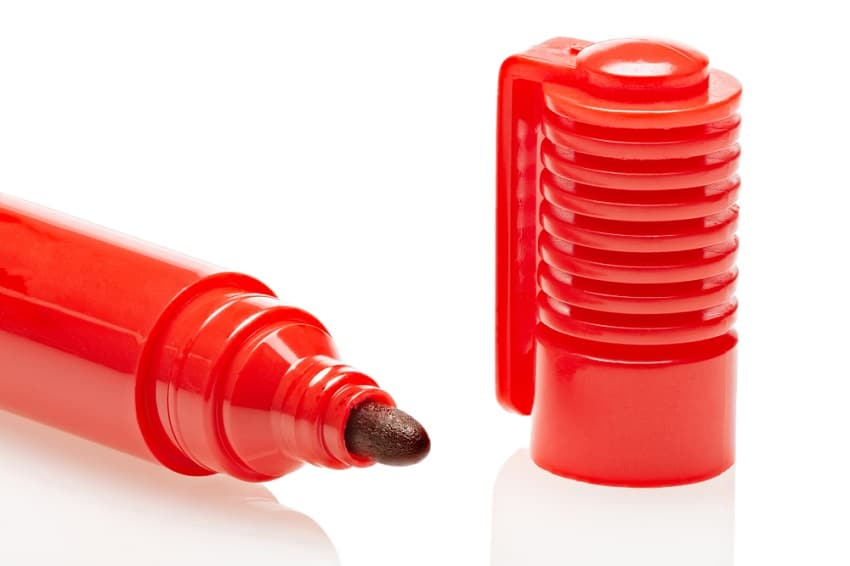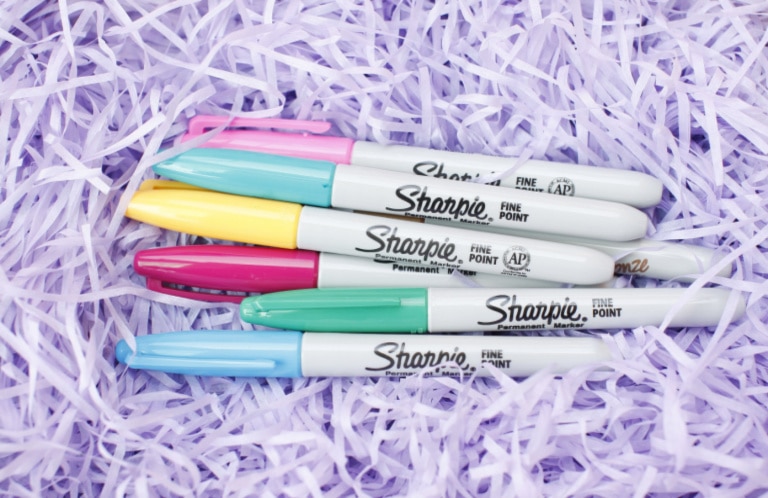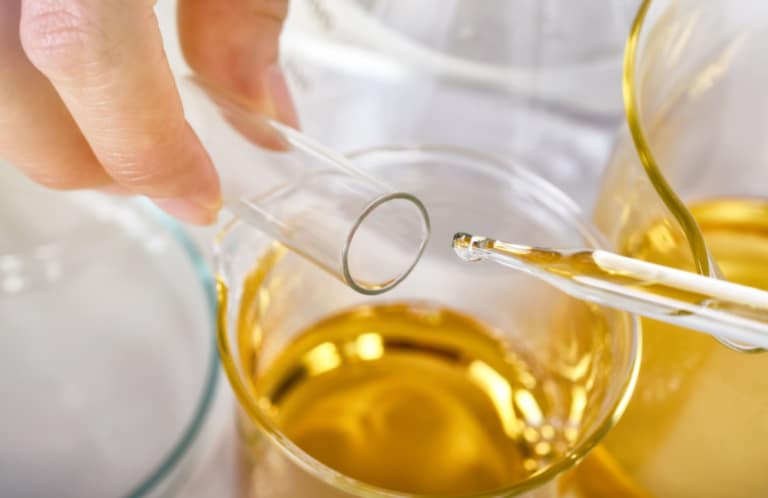
Whether you’re reclaiming an old pair of shoes, redecorating your favorite pair, or salvaging your child’s most recent “art project,” it can be a pain to remove Sharpie stains from footwear. Fortunately, there are some time-tested tricks that can help you to have your shoes looking pristine once again. Here, we go over the different ways you can get Sharpie off shoes with just a little bit of time and some elbow grease.
Contents
What are Sharpies?
Sharpies are one of the most common types of permanent marker available in countries around the world. They are extremely versatile, playing a key role in everything from artwork to lab work. As a permanent marker, sharpies adhere to most surfaces, are water-resistant, and resist fading.
The Sharpie was first introduced by Sanford in the mid-1960s as the first permanent marker that could write like a pen. It was also touted as one of the few permanent markers that could write on just about any surface, from glass and metal to wood and paper.
Sharpies were originally only available in black, but in 1979, Sanford also introduced brown, green, and blue varieties. Since then, the Sharpie spectrum has grown to encompass almost 40 different shades.
How Sharpies Work
While most of us have used a Sharpie at some point in our lives, many of us don’t know exactly how they work. Like most other pens, Sharpies consist of a hollow, airtight plastic tube that encases a porous, sponge-like center. The tip that you can see protruding from the end of the pen is an extension of this spongey core.
Since the interior material is porous, it easily soaks up liquid from an ink reservoir below. Pens that have no ink show a clear or white tip until you introduce some color. Once the ink has soaked into the pen’s core, it travels upwards through capillary action.
Each time that you use a Sharpie, it drains a small portion of ink from the porous center material. This forces more ink to be siphoned up to replace lost liquid, giving you a smooth, flawless line when drawing. A Sharpie should only stop working when all ink is drained from the reservoir and used or evaporated.
The most vital component of a Sharpie isn’t the design, however. The ink dictates how smooth a line will look, and how long the color will last. While washable inks are designed to break down easily, permanent inks tend to resist the most common cleaning solutions. Specialized permanent inks are generally composed of three parts to give color while allowing for flow and adhesion.
1. Colorant
In pens, the colorant is the pigment or dye that gives it a specific hue. It’s what you see after you’ve drawn a line and allowed it to dry. However, while the terms are often used interchangeably, pigments and dyes aren’t quite the same things.

Dyes are water-soluble, and so are often used in washable pens to allow for easy removable. When dyes are used in permanent markers, it can reduce their longevity and lead to weaker colors. This is because dyes are made using polar solvents, which tend to bind to similarly polar water molecules and lift out of clothes in the washing machine.
Pigments, on the other hand, are non-polar. This means that they bind more easily to organic molecules rather than water. In general, permanent markers use pigments instead of dyes so that the ink can resist weather, sweat, humidity, and other wear and tear from the environment.
It’s important to remember that permanent markers such as Sharpies are still susceptible to exposure damage. Sharpie marks left out in the sun can lose their vibrancy in a matter of months.
2. Solvent
Perhaps the most important component of permanent markers like Sharpies is the solvent used. This is a liquid that helps to dissolve ink color and allow it to permeate the spongy core of the marker. Without it, the colorant would gum up to prevent siphoning.

Since most pigments are non-polar, any solvent used should also be non-polar. However, many non-polar or organic materials can also be hazardous. Originally, Sharpies used xylene as the solvent of choice, which is a clear material often used in paints and varnishes.
While xylene may be safe in small quantities, inhaling large amounts can lead to serious health complications, including:
- Irritation of the mucous membranes
- Respiratory problems
- Lung issues
- Memory impairment
- Gastrointestinal problems
- Uncoordinated movement
- Dizziness and confusion
- Balance issues
- Nausea
- Muscle spasms
- Liver and kidney disease
- Premature death
Fortunately, most permanent markers now use other non-polar components as a solvent. Alcohols such as ethanol and isopropanol are a popular choice, and they don’t pose the same threat to long-term health from inhalation.
3. Resin
One of the main draws when it comes to Sharpies is their versatility. You can write on just about any surface without having to worry about marks wiping away, coming off on your skin, or disappearing with water.
The solvent is what allows a colorant to travel up through your Sharpie and make its way onto whatever surface you’re dealing with. However, it’s the resin that helps the color to set on a material. Without resin, the colorant would turn into a powder as the solvent evaporates.
Resin is a thick, gluey polymer that, while sticky enough to keep the fluid free inside of a Sharpie, will set once it comes into contact with air. When a colorant makes its way onto a surface, the solvent evaporates immediately, and resin is needed to help color stick quickly.
The most significant difference between permanent markers and their nonpermanent counterpart is the resin used, and the polarity of the material. As previously mentioned, colorants for permanent markers dissolve better in a non-polar solution, as they’re non-polar materials.
You might also like:
- How to Stretch Suede Shoes
- How to Clean Velvet Shoes
- How to Stop Shoes From Squeaking
- How to Keep Heels from Slipping Out of Shoes
- How to Remove Scratches from Leather Shoes
How Long Does Sharpie Last?
As a permanent pen, Sharpie markings can last for years, depending on the environment. While there’s no single answer for how long Sharpie art can last, your environment can have a significant impact on the longevity of shoe art.
Sharpie on shoes will wear down more quickly if worn on rough terrain. If the marks are made on leather, rubber, or the sole of the shoe, you may not have to worry. Over time, just the act of walking will cause marks to wear away. However, Sharpie can last much longer on fabric, as it penetrates the fibers. It also lasts longer on shoes that are rarely worn or used indoors.
Why Use Sharpies on Shoes?
Decorating shoes is never easy. They’re on our feet all day every day, and they can make an impressive fashion statement. Sharpies are one of the easiest ways to decorate shoes in the long term, as many middle and high schoolers have learned.
However, it’s not just for teens. Sharpies allow you to give a unique personal touch to your footwear. With plenty of colors and endless designs, they offer a cheap and easy way to customize apparel.
One of the best parts is that you can repurpose the same set of shoes over and over again. While Sharpies advertise themselves as permanent, there are plenty of ways that you can erase old designs. Even if it’s your kid who’s creating shoe art, you can clean the canvas for another round.
Cleaning sharpie from shoes may also help with the resale value. If you’re looking to sell shoes second-hand, anything but the very best artwork will set you back. Choosing to remove Sharpie from shoes can help you to fetch a higher price online.
How to Get Sharpie off Shoes
While Sharpie markers may be permanent, there are still ways to remove an ink stain from various fabrics and other materials. However, there is no “one-size-fits-all” solution when it comes to Sharpie removal. Colors, inks, fabric type, and timeframe can all affect how easy it is to remove a Sharpie stain.
1. Fabric Shoes
Many shoes, including sneakers and athletic shoes, have an upper portion that’s made of fabric or canvas. It can be a challenge to remove Sharpie from fabrics, as the ink tends to penetrate deep into the fibers.
Fortunately, if you want to remove Sharpie art, there are plenty of different methods that you can try. If one doesn’t work for you, don’t lose hope. Some methods work better with certain fabrics than others. The best options for removing permanent marker from fabric include:
- Rubbing alcohol: This is safe for most fabrics but may cause fumes.
- Hand sanitizer: Hand sanitizer works well but can be a messy option.
- Aerosol hairspray: Hairspray works wonders getting marker off smooth fabrics.
- Nail polish remover: While effective, acetone can damage some fabrics.
- WD-40: WD-40 can damage or stain certain fabrics, so use with care.
- White vinegar: Though smelly, vinegar is a safe and eco-friendly solution for most fabrics.
- Lemon juice: Lemon juice is also safe and eco-friendly, but it can bleach the color.
- Toothpaste: Believe it or not, the toothpaste sitting in your bathroom can be used to scrub permanent marker from some fabrics.
Using a clean, damp cloth, dab whichever removal material you choose to use on the affected fabric. Try to avoid back and forth movements, as this can smear the mark or push the ink deeper into the material. Instead, lift the stain out, reapplying more Sharpie remover if necessary.
2. Rubber Shoes
Many shoe soles are made of rubber. It’s a sturdy, durable material, yet flexible enough to offer comfort and support. Fortunately, it holds up well to abuse, so you can use just about any Sharpie stain removal method under the sun without risking damage to the material.
Denatured or isopropyl alcohol is perhaps one of the cheapest, safest, and most effective methods of removing Sharpie from rubber. Hairspray that uses alcohol as a solvent can also help you to remove permanent marks, as will vinegar, lemon juice, toothpaste, and WD-40.
When cleaning Sharpie from rubber, it’s best to avoid solutions containing acetone, such as nail polish remover. Acetone can eat away at certain rubbers, causing your shoes to break down more quickly.
3. Leather Shoes
Anyone who owns leather shoes knows that they require specialized care that other materials don’t need. Leather needs to be treated regularly to keep it looking its best and prevent it from drying out, warping, or cracking. As such, it should come as no surprise that you need to take extra care when removing Sharpie stains from leather.
The best Sharpie removal methods for leather use gentle materials. This includes sunscreen, oil-free hairspray, white vinegar, acetone-free nail polish remover, and baby wipes. For some leathers, you can also use toothpaste mixed with baking soda, though the abrasive nature of this method may be too harsh on soft materials. Make sure to only dab a little bit of stain remover at a time to avoid warping the leather.
4. Plastic Shoes
Many shoes, both economy styles and high-end designs, have plastic components for both aesthetics and support. Fortunately, it’s easy to remove Sharpie from smooth plastic. One of the most popular methods is by writing over top of the permanent marks with a nonpermanent dry erase marker. Solvents in the marker eat away at the permanent ink, lifting it and allowing you to wipe it away with a clean, dry cloth.
If the dry erase marker trick doesn’t work for you, there are some other materials that can help you to remove Sharpie from plastic. Window cleaner, rubbing alcohol, sunscreen, hydrogen peroxide, hair spray, and toothpaste mixed with baking soda can also remove permanent marks. For those looking for a gentle, holistic approach, tea tree oil has been known to remove Sharpie stains from plastic surfaces.
5. Wooden Shoes
While wood isn’t as common a shoe material today as it has been in the past, you can still find both casual and formal shoes with a wooden sole or wooden accents. Many fancy sandals, heels, and wedges use wood along the base of the shoe.
If you find yourself with Sharpie on the wooden portion of your shoe, you need to be careful about what you use to remove it. Wood, especially treated wood, can be sensitive to materials that are acidic or abrasive.
One of the most effective yet surprising methods for removing Sharpie from wood is by applying smooth peanut butter. This method is safe for most types of wood, and it’s more cost-effective than other options. If peanut butter doesn’t work, you can also try rubbing alcohol or toothpaste, though these materials can be harsher on delicate wood.
Read Also: How to Get Poison Ivy Off Shoes
Tips and Tricks for Removing Sharpie
When removing Sharpie from your footwear, there are some important things to keep in mind. By taking proper precautions, you can ensure that you remove stains wholly and safely from just about any shoe.
1. Look at the Label
As with any other piece of clothing, the label on shoes can tell you all that you need to know about care. Before treating your shoes, you should ensure that you read through the care instructions to avoid any damage. If there are no instructions, look at the fabric content to determine the best method of care.
2. Treat Sooner Rather Than Later
If you think you may want to clean the Sharpie off your’s or another’s shoes, do so as soon as possible. It’s always easier to remove fresh stains rather than old ones. If you can’t treat the material immediately, soak it in cold water to prevent ink from penetrating too deep.
3. Test First
Like with any cosmetic fix, you should test a small area of your shoe before trying any removal method. Try out a small amount of the removal material on an inconspicuous part of the shoe before treating it as a whole. Doing this helps to ensure that you don’t have to worry about color loss or damage on a visible level.
4. Wash Inside-Out
With Sharpie stains, it can be tempting to rub the affected surface. However, all this does is push the ink through the fabric. Instead, it’s best to lay the stained side face down on either paper towels or clean cloths. Tackling the stain from the backside pushes it through the fabric instead of rubbing it in.
5. Allow for Ventilation
Some of the Sharpie removal methods discussed use materials that can cause noxious fumes, such as acetone or WD-40. When cleaning Sharpie from your shoes, make sure that you’re working in a well-ventilated area. If you’re indoors, keep the windows open and run a fan as you work to avoid suffering any irritation.
6. Keep Away from Heat
If you’re planning on removing Sharpie from a pair of shoes, it’s best to store them in a cool, dark, and dry environment. Heat and humidity can cause permanent ink to set a stain, making it much more difficult to remove. You should also avoid putting shoes with Sharpie on them in the dryer.
Latest Post:
- Where Are Vans Made? (Ultimate Guide Revealed)
- How Much Do Shoes Weigh?
- Lights On, Troubles Gone: How to Fix LED Shoes Like A Pro
- Do Vans Run Big or Small? (All You Need To Know)
- Do Adidas Run Big, Small or True to Size?
7. Use a Dry Cleaner
While this option isn’t cheap, it can help you to keep your shoes looking their best. Dry cleaners don’t use water to wash clothes, but instead, use a chemical solvent capable of removing permanent ink. Just make sure to check that your dry cleaner uses safe chemicals.
Sharpies can be an easy and effective way to give your footwear a unique look. However, it’s not always easy to get rid of Sharpie marks after the face. Luckily, there’s plenty of ways to erase Sharpie from your shoes and leave your favorite pair looking clean and pristine. By trying out the methods discussed, you can clear away unwanted Sharpie art, increase the resale value of your shoes, or create a new blank canvas for your next masterpiece.
